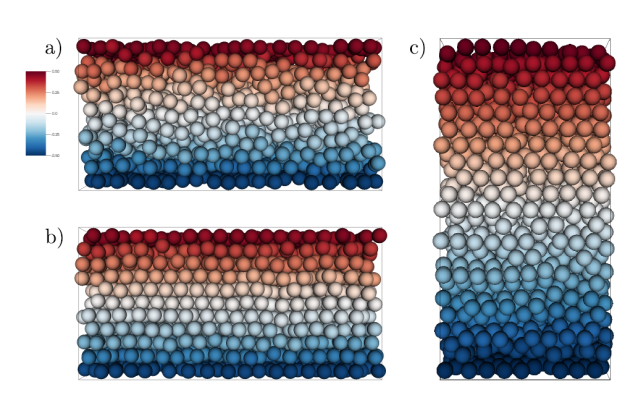Reports: ND954948-ND9: High-Resolution, Massively Parallel, Three-Dimensional, Grain-Resolving Simulation Tools for High-Concentration Particulate Flows
Eckart H. Meiburg, University of California, Santa Barbara
Turbidity currents are particle-laden flows in the ocean that are driven by gravity. Particle concentrations are usually sufficiently low far away from the sediment bed so that particle-particle interactions play a small or negligible role throughout most of the body of the current. In this region, the Boussinesq approximation of the Navier-Stokes equations, in conjunction with a continuum formulation for the sediment concentration, is well-suited to capture the dynamics of the flow. However, near the sediment bed particle concentrations can be very high, which can potentially result in complex non-Newtonian behavior, hindered settling and other effects. We have developed a grain-resolving simulation approach that opens up a path towards multiscale flow simulations via the μ(I)-rheology.
When the concentration of particles grows large, particle-particle interactions become important. In order to capture these, we fully resolve the particles interacting with the fluid by tracking each individual particle, evaluating the fluid no-slip condition at the particle surface, and accounting for all the forces acting on the particle. Such simulations typically use grid resolutions of 10-20 grid cells per particle diameter to resolve the flow and are thus limited in scope to domains whose dimensions measure only tens to hundreds of diameters in length. However, the idea is to use grain-resolved simulations to develop better models of sediment transport to be used in larger-scale simulations.
In order to fully resolve the flow around each particle, we employ an immersed boundary method (IBM). This method solves the Navier-Stokes equations everywhere in the domain, including nearby the particles. In this way, we evaluate the fluid forces and moments acting on each particle, and then solve the equations of motion for each particle to advance the particle locations and velocities in time. We account for both lubrication and contact forces acting on the particles. Here the lubrication force accounts for any short-range hydrodynamic forces that are unresolved by the fluid grid, and it is evaluated based on existing scaling laws. The contact forces are composed of components normal and tangential to the particle surface, which act at the point of contact between the two particles so that the resulting force and torque on the particles can be evaluated. A nonlinear spring-dashpot model is used for the normal contact force, where the stiffness and damping coefficients are adaptively calibrated for every collision. A linear spring-dashpot model is used for the tangential contact force. Similarly to the normal coefficients, the tangential coefficients of stiffness and damping are also adaptively calibrated.
Figure 1 shows a representative pressure driven flow over a dense sediment bed. The left frame shows an instantaneous slice through the domain, the colorscale illustrating streamwise fluid velocity and the grayscale illustrating particle velocity. The right frame shows the time-and-space-averaged streamwise velocity of the fluid and particles.
Figure 1
Figure 2 shows the shearing of dense suspensions. The colorbar indicates the streamwise velocity of particles. Shown are instantaneous snapshots for (a) Re = 10 and volume fraction 0.42 (b) Re = 10 and volume fraction 0.52 (c) Re = 40 and volume fraction 0.54.
Figure 2
To date, we have published a first journal paper:
Biegert, E., Vowinckel, B. and Meiburg, E. 2017 A collision model for grain-resolving simulations of flows over dense, mobile, polydisperse granular sediment beds. J. Computational Physics 340, 105-127.
A second journal publication has been submitted, and two more are currently in preparation.













